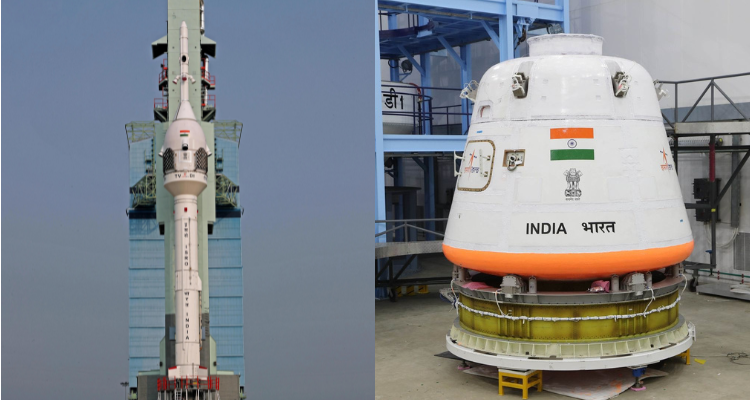New Delhi, October 21: In a momentous step towards India’s ambitious Gaganyaan program, the Indian Space Research Organisation (ISRO) achieved a significant milestone with the successful launch of an unmanned test flight designed to evaluate the emergency escape system of the crew module.
The triumphant test flight from Sriharikota on Saturday demonstrated the nation’s readiness to venture into the realm of human space exploration.
Pioneering Gaganyaan Mission
The Gaganyaan program aims to send a crew of three members into a 400-kilometer Low Earth Orbit (LEO) for a three-day mission, ensuring their safe return by landing in Indian sea waters. This venture represents the core of India’s expanding space exploration.
Aiming to showcase its human spaceflight capabilities, India is scheduled to embark on the Gaganyaan mission in 2024, with further plans to establish a space station by 2035 and to undertake missions like the Venus orbiter and Mars lander.
The Crucial Crew Escape System
At the core of the recent achievement is the testing of the crew escape system, an essential safety feature in the event of an emergency during the transonic phase or near the speed of sound velocity.
The successful test involved the command module being propelled 2 kilometers away from an out-of-control and burning rocket, all within a span of approximately 9 minutes, mimicking a real-life accident scenario.
Unprecedented Technological Convergence
The Gaganyaan mission signifies a profound achievement in India’s space narrative. It not only signifies the capability to launch living humans into space but also to bring them back safely.
This endeavor demands the convergence of an array of cutting-edge technologies, encompassing rocketry for propulsion, fluid mechanics for controlled flight, biosciences for life support systems, and advanced material sciences for crucial components like the heat shield.
The synergy of these systems is imperative for mission success, leaving no room for error.
A Quantum Leap in Space Sector Participation
Gaganyaan’s triumphant journey into human spaceflight heralds a promising future for India’s participation in the emerging space tourism sector, which holds the potential to reach a substantial market value.
Moreover, it paves the way for India to contribute actively to space stations and lunar exploration.
The mission’s success promises to have a profound impact on the nation’s younger generation, inspiring them to aspire to explore outer space and contribute to India’s scientific and economic capabilities.
Challenges and Self-Reliance
However, it is imperative to acknowledge that the path to success in space exploration is fraught with challenges. Past incidents like the Columbia disaster, the Apollo 1 fire, and the Soviet cosmonauts’ loss highlight the unforgiving nature of space.
To achieve Gaganyaan’s objectives, rigorous testing under high-stress conditions is essential. The successful completion of this mission marks a significant stride towards India’s self-reliance in the field of space technology.
As the Gaganyaan mission advances, it is reminiscent of Wing Commander Rakesh Sharma’s words when he gazed upon Earth from space in 1984: “Saare Jahan se Acha”. Decades later, in 2024, a cadre of Indian Gaganauts will echo the same sentiment, this time from an Indian spacecraft, as Atmanirbhar Bharat ascends on the global map.






